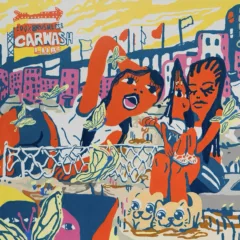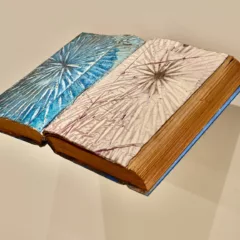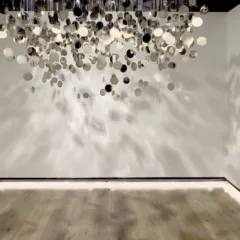Dunkerque (Dunkirk) is a town many pass through after disembarking the ferry from England, and not an obvious destination for an art exhibition. Its commercial center abuts the sea where a deep, sand beach with a wide, paved promenade is lined with modest cafes offering an extensive selection of local beers, moulles cooked any way you like them, and numerous ice cream specialties. It has not been spoiled by gentrification; the vendor on the beach across from where I ate was selling men’s, or perhaps boys’, bathing trunks for 5 Euros. The parts of the city visible in a quick drive-through included several interesting public buildings from the 1920s or 1930s, an impressive Art Nouveau facade and numerous brick structures in a Flemish style.
Lieu d’Art et Action Contemporaine, Dunkerque
What had drawn me to Dunkerque was an exhibition at LAAC – Lieu d’Art et Action Contemporaine de Dunkerque. Located next to the harbor, it is a white-tiled structure built in 1979-82 without exterior windows but lit by effective skylights and has particularly welcoming public spaces. It is surrounded with an algae-filled pond and set in a sculpture park, bermed to resemble sand dunes. The park, which includes at least one WWII bunker, was well-used by local pedestrians and cyclists on the Sunday in August when I visited.
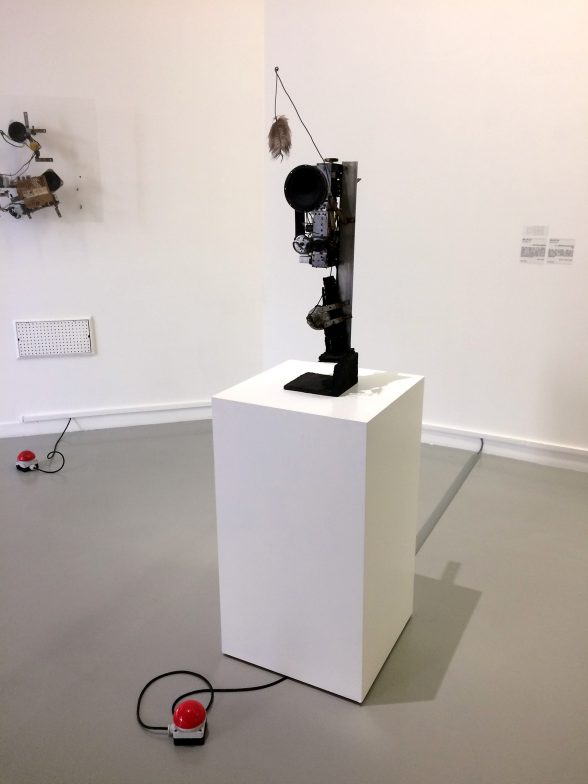
“Musique à Voire” (“Music to See,” which ended Sept. 17), organized by the composer and musicologist Jean-Yves Bosseur, was a very well conceived exhibition considerably more substantial than I’d anticipated in this isolated venue. While tracing familiar territory, it offered a broad view of the subject and a number of surprises with artists, both earlier and contemporary, who were new to me. It also included two Jean Tinguely works that actually functioned – the only working pieces I have seen in decades other than those at the Tinguely Museum in Basel, which had lent these.
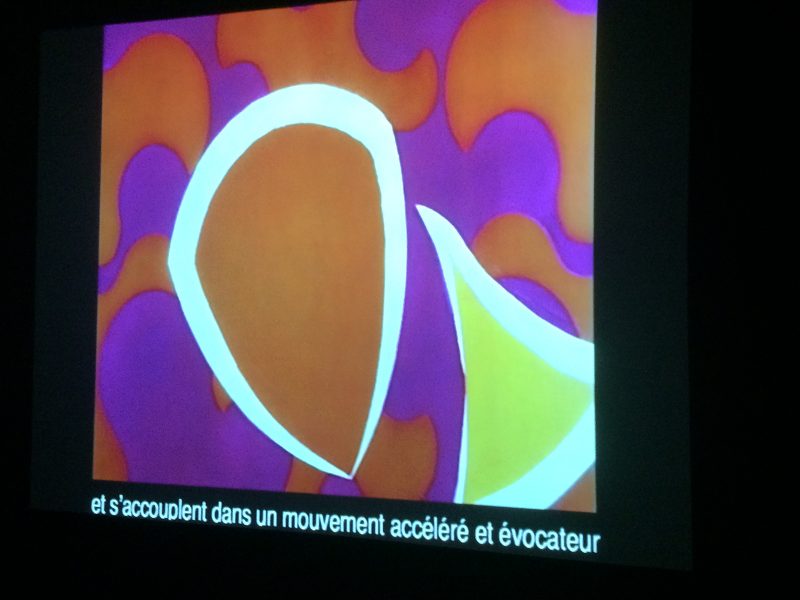
One of the original justifications for abstract art was the comparison to music. At the turn of the Twentieth Century there was much discussion of the rather rare phenomenon of actually experiencing sound inspired by visual stimulation, known as synesthesia, or the response of one of the senses to stimulation by another sense. This was famously set out by Kandinsky in his manifesto, “Klänge” (“Sounds” 1912). If the Russian artist’s own work was not on view, the birth of abstraction was well-represented by the other contender for position of first abstract painter, the Czech František Kupka. The opening gallery contained works that variously employed rhythmic patterns, were inspired by the music of specific composers, or in the case of Carsten Nicolai, actually demonstrated the physical equivalence of sound and image.
Nicolai’s “Wellenwanne” (2001-03) consists of a low tray filled with several inches of water and speakers sited below it. As the speakers produced louder and louder, deep base sounds the water began to vibrate, eventually forming a variety of surface patterns. On the wall behind the structure were photographs of four of these sonic patterns. I enjoyed the piece but imagined that, as with other sound-producing artworks, it has been trying for the museum staff to listen to on an ongoing basis.
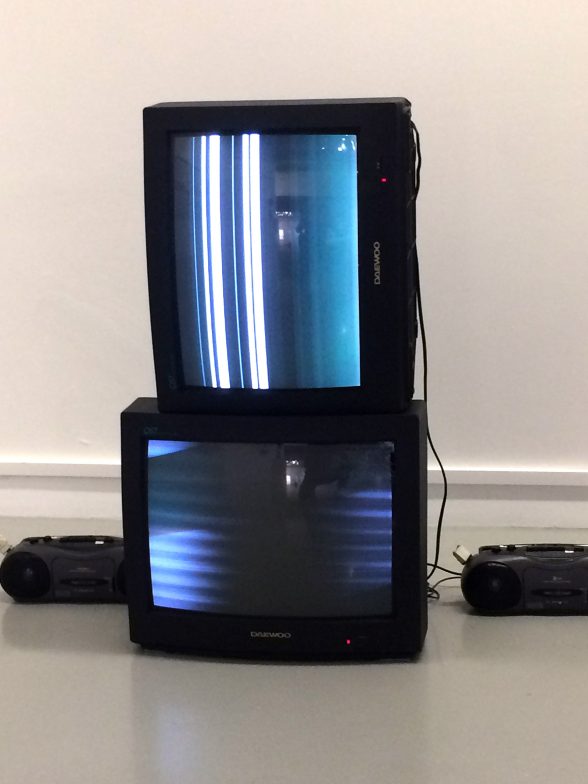
A black-box space within the gallery exhibited two entertaining films I’d never seen, by the French artist Henry Valensi (1930s, re-mastered with subtitles), who used the first color film stock to animate his own paintings. His use of abstract forms which dance to music is similar to the effects Oskar Fischinger created for Walt Disney in “Fantasia” (1940), although Fischinger had done similar work during the 1920s in black and white. The American, Thomas Wilfred, created machines beginning in 1919 that produced moving, colored forms, and his work will be the subject of an exhibition this autumn at the Smithsonian American Art Museum.
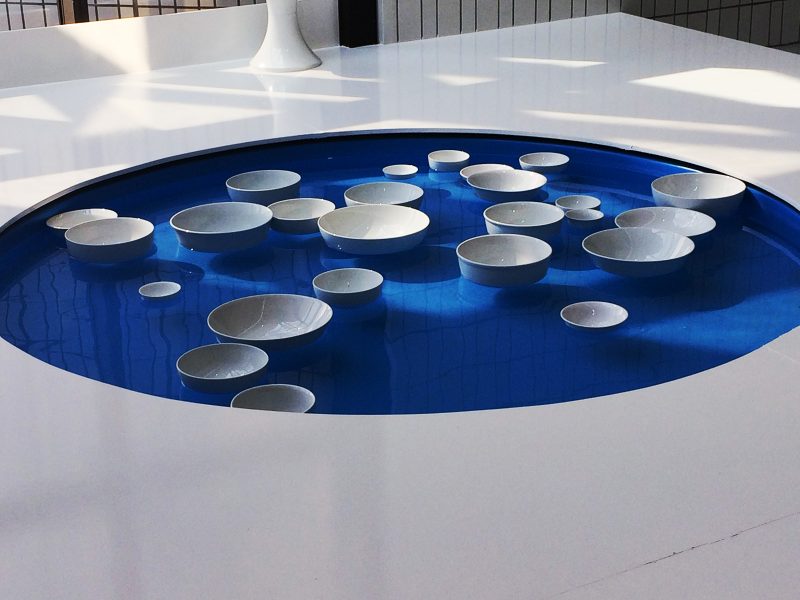
“Musique à Voire” included a range of important artists with Marcel Duchamp, John Cage (a work in homage to Duchamp), Jean Tinguely, and Nam June Paik among them. It also included two very different works by an artist, Céleste Boursier-Mougenot, whom I didn’t know (although he had a solo exhibition at the University Museum of Contemporary Art, UMass, Amherst in 2012) both of which were notable and immensely engaging. The first was a circular pond in which floated a number of white, porcelain bowls which made the most wonderful, chime-like sounds when they touched each other.
The second piece was a video by Ariane Michel of an installation by Boursier-Mougenot, “From here to hear” (1999-2014), in which the artist arranged a group of chromatically-tuned guitars around a room, then let in a flock of finches who created music with a combination of their calls and the sounds they made landing and walking on the guitar strings.
This exhibition succeeded with a challenge that faces many museums today: how to present work and ideas that stimulate a knowledgeable audience while offering something for a more general public which may not be familiar with contemporary art. That’s all the more reason to congratulate the sophisticated curatorial decisions at LAAC.


